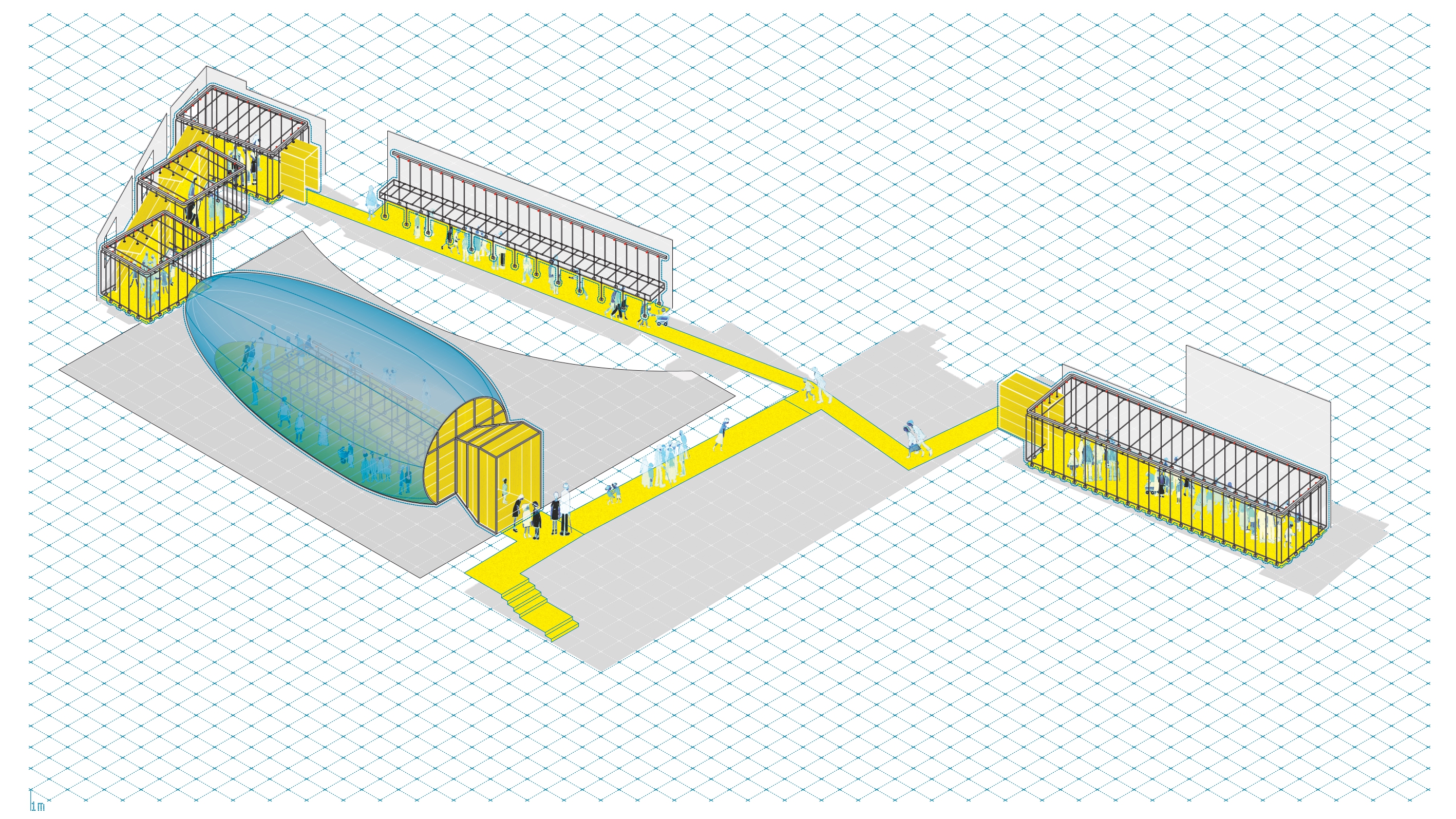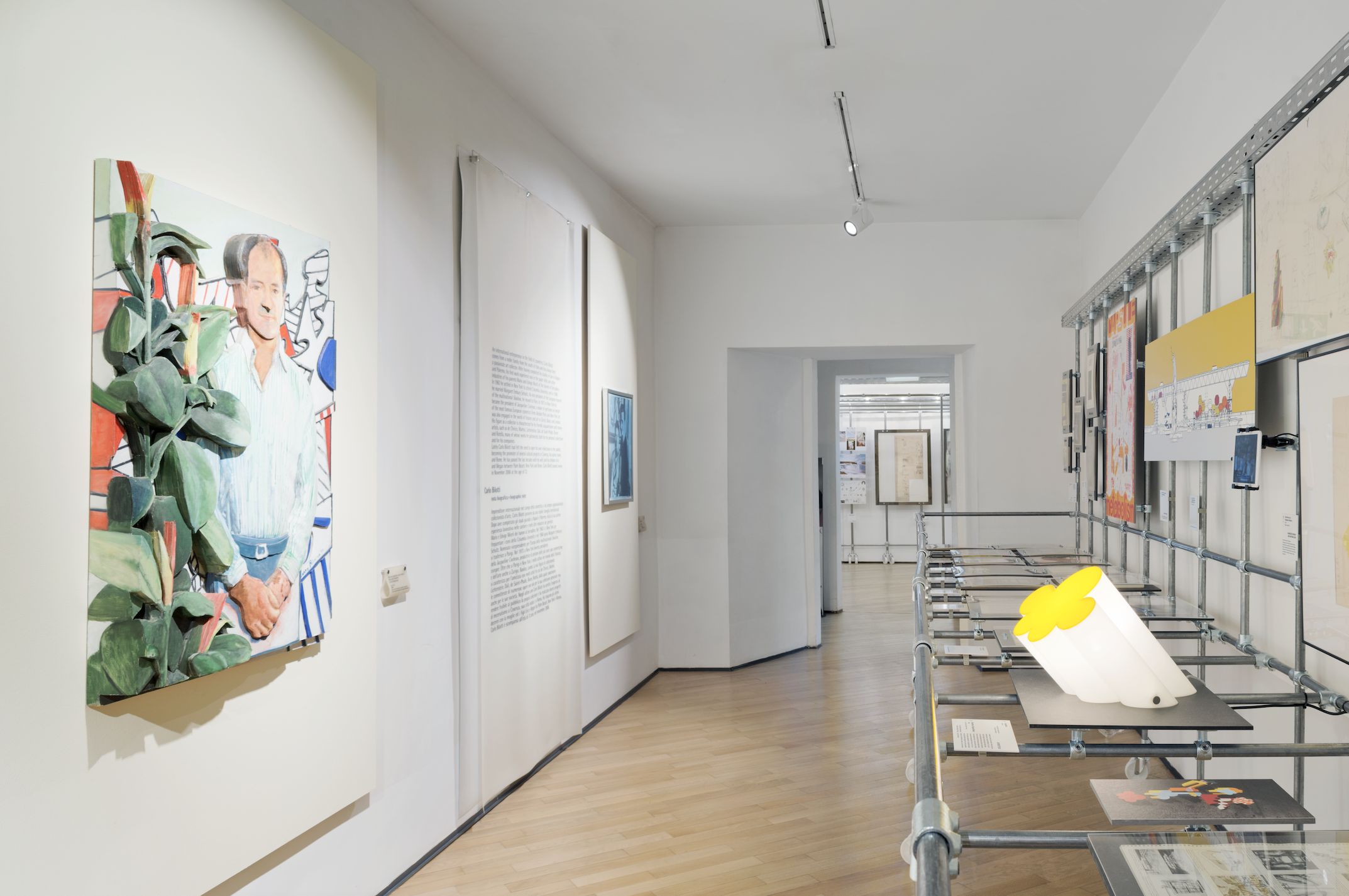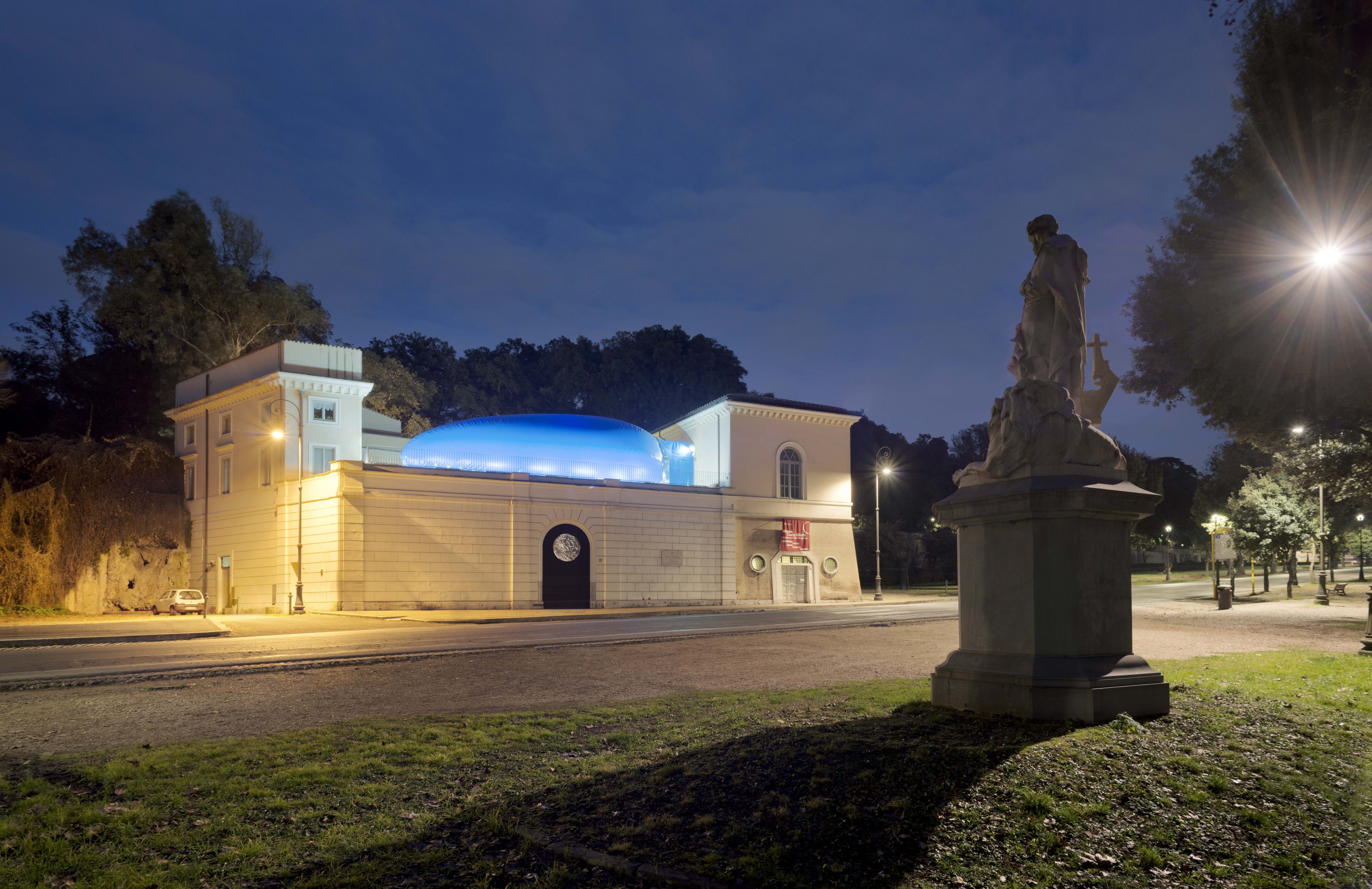
INVISIBLE
ARCHITECTURE
Japanese and Italian avant-garde movements
redefine founding topics of the contemporary debate
INTRODUCTION
Fifty years passed from the explosion of two fundamental phenomena of the architectural
avant-garde, that made their debut in an age of change, revolution, and hope.
avant-garde, that made their debut in an age of change, revolution, and hope.
Metabolist in Japan and Radicals in Italy, though in very different cultural and traditional contexts, developed parallel experiences by sharing the themes of investigation and languages, and
by producing extraordinary consequences on contemporary architecture.
by producing extraordinary consequences on contemporary architecture.
EXHIBITION SPACES





THE EXHIBITION
The search for control of the environment at every design scale, the desire for redefining
the future of society through technology, the development of new ideas for inhabiting the
planet: the unbiased architectural experimentations that took place in Japan and Italy in the 1960s and 1970s are at the core of the “Architettura Invisibile” exhibition, that was hosted at Museo Carlo Bilotti - Aranciera di Villa Borghese, in Rome, Italy, between January 19, 2017, and March 26, 2017. Organized by Fondazione Italia Giappone, supported by the Ministero dei Beni e delle Attività Culturali e del Turismo, Ministero degli Affari Esteri e della Cooperazione Internazionale, by the Consiglio Nazionale degli Architetti Pianificatori Paesaggisti e Conservatori and by the Istituto di Cultura Giapponese - Japan Foundation,
the exhibition was part of the celebrations for the 150th anniversary of relations between
Japan and Italy. The event arises from an exploration of the historical role, in the course of the 1960s and the 1970s, of Japanese architecture avant-gardes that convened in the Metabolist movement and in the Italian Radical Architecture.
the future of society through technology, the development of new ideas for inhabiting the
planet: the unbiased architectural experimentations that took place in Japan and Italy in the 1960s and 1970s are at the core of the “Architettura Invisibile” exhibition, that was hosted at Museo Carlo Bilotti - Aranciera di Villa Borghese, in Rome, Italy, between January 19, 2017, and March 26, 2017. Organized by Fondazione Italia Giappone, supported by the Ministero dei Beni e delle Attività Culturali e del Turismo, Ministero degli Affari Esteri e della Cooperazione Internazionale, by the Consiglio Nazionale degli Architetti Pianificatori Paesaggisti e Conservatori and by the Istituto di Cultura Giapponese - Japan Foundation,
the exhibition was part of the celebrations for the 150th anniversary of relations between
Japan and Italy. The event arises from an exploration of the historical role, in the course of the 1960s and the 1970s, of Japanese architecture avant-gardes that convened in the Metabolist movement and in the Italian Radical Architecture.
Curated by Rita Elvira Adamo, a young scholar who conceived it starting from comparative research she started at London Metropolitan University, the exhibition highlights the similarities and disparities between the two experiences. A wide range of prominent authors, who starting from their innovative experimentations affirmed themselves as protagonists of contemporary architectural research, are part of the exhibition: Arata Isozaki, Archizoom (Andrea Branzi, Gilberto Corretti, Paolo Deganello, Massimo Morozzi, Dario and Lucia Bartolini), Kiyonori Kikutake, Kisho Kurokawa, Fumihiko Maki, Otaka Masato, Superstudio (Adolfo Natalini, Cristiano Toraldo Di Francia, Roberto Magris, Alessandro Magris, Gian Piero Frassinelli and Alessandro Poli), Kenzo Tange, UFO (Lapo Binazzi, Carlo Bachi, Patrizia Cammeo, Riccardo Foresi, Titti Maschietto, Sandro Gioli). The central part of the exhibition was structured according to three themes through which the visitor could understand affinities and differences between the researches: Environment, Technology, Inhabitation. The final segment of the exhibition, symbolized by a large inflatable element specifically designed by Analogique and that was placed on the terrace of the museum accommodated design experiences of the contemporary architects in the two countries



EXHIBITION RESEARCHES
Environment Sections
In the Avant Gardes Environment sections, the projects were selected according to the groups’ theories for the relationship between man, architecture and nature. Both for the Metabolists and the Radicals, nature found a place in the projects as a distinct entity yet coexisting with architecture, acting as a neutral spectator of human labour rather than being a reality changed by the-turn-of–the-century rationalist positivism.
Likewise, both the new Italian and Japanese generations look at nature as something to be respected, a source of inspiration and reflection, in accordance with the new sustainability principles, hence not something that needs deep changing.
Technology Sections
In the Avant Gardes Environment sections, the projects were selected according to the groups’ theories for the relationship between man, architecture and nature. Both for the Metabolists and the Radicals, nature found a place in the projects as a distinct entity yet coexisting with architecture, acting as a neutral spectator of human labour rather than being a reality changed by the-turn-of–the-century rationalist positivism.
Likewise, both the new Italian and Japanese generations look at nature as something to be respected, a source of inspiration and reflection, in accordance with the new sustainability principles, hence not something that needs deep changing.
Technology Sections
In the Technology sections, the projects will be selected according to their socio-technological characteristics. Since the early 20th century, architecture has seen technology as the key to improving society and even altering the natural environment. Such progress further evolved in the avant-gardes of the 1960s, coming to realise that the use of the most advanced technologies could work as a model for the creation of a new human society of the future.
The use of mega-structures was the most flagrant example of this proposed revolution and it is important to emphasise that, whilst the megastructure projects have long sunk into oblivion, the use of technology foreseen by the Radicals has instead found among the new generations of architects its greatest implementation. Concepts like modularity, immateriality, hyperlink as well as the relationship between technology and nature in order to improve and preserve the environment, are all themes that established a direct connection between the Avant-gardes and the Contemporaries.




Inhabiting Section
The last sections on Inhabiting are probably the ones that make the comparison between the Avant - gardes and the Contemporaries a striking confrontation. The first ones managed to bring into focus a series of extremely advanced intuitions on how to experience a metropolis in a dynamic way and with no fixed points, anticipating de facto the life of modern man as designed in today’s cities. On the other hand, Contemporaries are trying to bring back to a more human scale the approach to the housing design through the use of advanced tools in the sustainable approach to the city. There are still some relevant specificities between Japanese and Italian architects, which nevertheless found some points of contact over the years. Being the themes still undoubtedly complex and relevant, the scientific equipment will take advantage of a series of historical-critical texts written by notable scholars from different countries that have deepened in many years the interest in these two groups and two eras.

Virginia Raggi
Sindaca / Mayor
Luca Bergamo
Vice Sindaco / Deputy Mayor
Claudio Parisi Presicce
Sovrintendente Capitolino ai Beni Culturali / Superintendent of Rome Cultural Heritage
Comunicazione e relazioni esterne / Communication and External Relations
Teresa Franco
Renata Piccininni
Filomena La Manna
Luca D’Orazio
Servizio mostre e attività culturali /
Exhibitions and Cultural Activities Service Federica Pirani
Director
Gloria Raimondi
Francesca Salatino
Sindaca / Mayor
Luca Bergamo
Vice Sindaco / Deputy Mayor
Claudio Parisi Presicce
Sovrintendente Capitolino ai Beni Culturali / Superintendent of Rome Cultural Heritage
Comunicazione e relazioni esterne / Communication and External Relations
Teresa Franco
Renata Piccininni
Filomena La Manna
Luca D’Orazio
Servizio mostre e attività culturali /
Exhibitions and Cultural Activities Service Federica Pirani
Director
Gloria Raimondi
Francesca Salatino
Museums, villas and historical parks direction
Claudio Parisi Presicce
Direttore / Director
Museo Carlo Bilotti - Aranciera di Villa Borghese
Daniela di Chiappari
Events
Ilma Reho
Museo and Permanent Collection
Carla Scagliosi
Temporary Exhibitions
Scientifico committee Museo Carlo Bilotti
Margaret Embury Schultz Bilotti
President
Claudio Parisi Presicce
Federica Pirani
Edvige Bilotti
Roberto Bilotti
Support for museum setting-up
Lucia Pierlorenzi
Simonetta De Cubellis
Claudio Parisi Presicce
Direttore / Director
Museo Carlo Bilotti - Aranciera di Villa Borghese
Daniela di Chiappari
Events
Ilma Reho
Museo and Permanent Collection
Carla Scagliosi
Temporary Exhibitions
Scientifico committee Museo Carlo Bilotti
Margaret Embury Schultz Bilotti
President
Claudio Parisi Presicce
Federica Pirani
Edvige Bilotti
Roberto Bilotti
Support for museum setting-up
Lucia Pierlorenzi
Simonetta De Cubellis
Exhibition curated by
Rita Elvira Adamo
Organizational Institutions
Fondazione Italia Giappone /
Italy Japan Foundation
Ambasciata del Giappone /
Embassy of Japan
Press Office Image
Progetto di mostra / Exhibition Project Cristiano Lippa, Federico Scaroni
Catalogo a cura di / Catalogue edited by
Rita Elvira Adamo, Cristiano Lippa, Federico Scaroni
Progetto grafico / Graphic Project
Matteo Blandford
Allestimento / Setting-up
Analogique
Archivies and Institutions Archivio Cristiano Toraldo di Francia, Centre Pompidou, Archivio Lapo Binazzi, Archivio Gian Piero Frassinelli, Maki and Associates, Kiyonori Kikutake, Kisho Kurokawa Architect and Associates, Misa Shin & Co., CSAC dell’Università di Parma, Department of Urban Engineering - Graduate School of Engineering - University of Tokyo, Mori Art Museum, National Archivesof Modern Architecture - Agency for Cultural Affairs, Shinkenchiku-sha
Exhibition Scientific Committee
Andrea Branzi Presidente / President
Lapo Binazzi
Beatrice Lampariello
Kaon Ko
Gabriele Mastrigli
Ken Tadashi Oshima
Cristiano Toraldo di Francia
Esmeralda Valente
Julian Worrall
Insurance
Aon Italia S.r.l.
Ringraziamenti / Acknowledgements
Kazuyoshi Umemoto, Umberto Vattani,
Umberto Donati, Caterina Guzzo,
Peter Carl, Robert Mull, Caterina
Beevor, Piero Mascitti, Enrico Grimani,
James Payne, Jane McAllister, Cecilia
Sammarco, Nicolò Spina, Derek Irwin,
Beatrice Ciacchella, Donato Santoro
Rita Elvira Adamo
Organizational Institutions
Fondazione Italia Giappone /
Italy Japan Foundation
Ambasciata del Giappone /
Embassy of Japan
Press Office Image
Progetto di mostra / Exhibition Project Cristiano Lippa, Federico Scaroni
Catalogo a cura di / Catalogue edited by
Rita Elvira Adamo, Cristiano Lippa, Federico Scaroni
Progetto grafico / Graphic Project
Matteo Blandford
Allestimento / Setting-up
Analogique
Archivies and Institutions Archivio Cristiano Toraldo di Francia, Centre Pompidou, Archivio Lapo Binazzi, Archivio Gian Piero Frassinelli, Maki and Associates, Kiyonori Kikutake, Kisho Kurokawa Architect and Associates, Misa Shin & Co., CSAC dell’Università di Parma, Department of Urban Engineering - Graduate School of Engineering - University of Tokyo, Mori Art Museum, National Archivesof Modern Architecture - Agency for Cultural Affairs, Shinkenchiku-sha
Exhibition Scientific Committee
Andrea Branzi Presidente / President
Lapo Binazzi
Beatrice Lampariello
Kaon Ko
Gabriele Mastrigli
Ken Tadashi Oshima
Cristiano Toraldo di Francia
Esmeralda Valente
Julian Worrall
Insurance
Aon Italia S.r.l.
Ringraziamenti / Acknowledgements
Kazuyoshi Umemoto, Umberto Vattani,
Umberto Donati, Caterina Guzzo,
Peter Carl, Robert Mull, Caterina
Beevor, Piero Mascitti, Enrico Grimani,
James Payne, Jane McAllister, Cecilia
Sammarco, Nicolò Spina, Derek Irwin,
Beatrice Ciacchella, Donato Santoro
